Affiliate links on Android Authority may earn us a commission. Learn more.
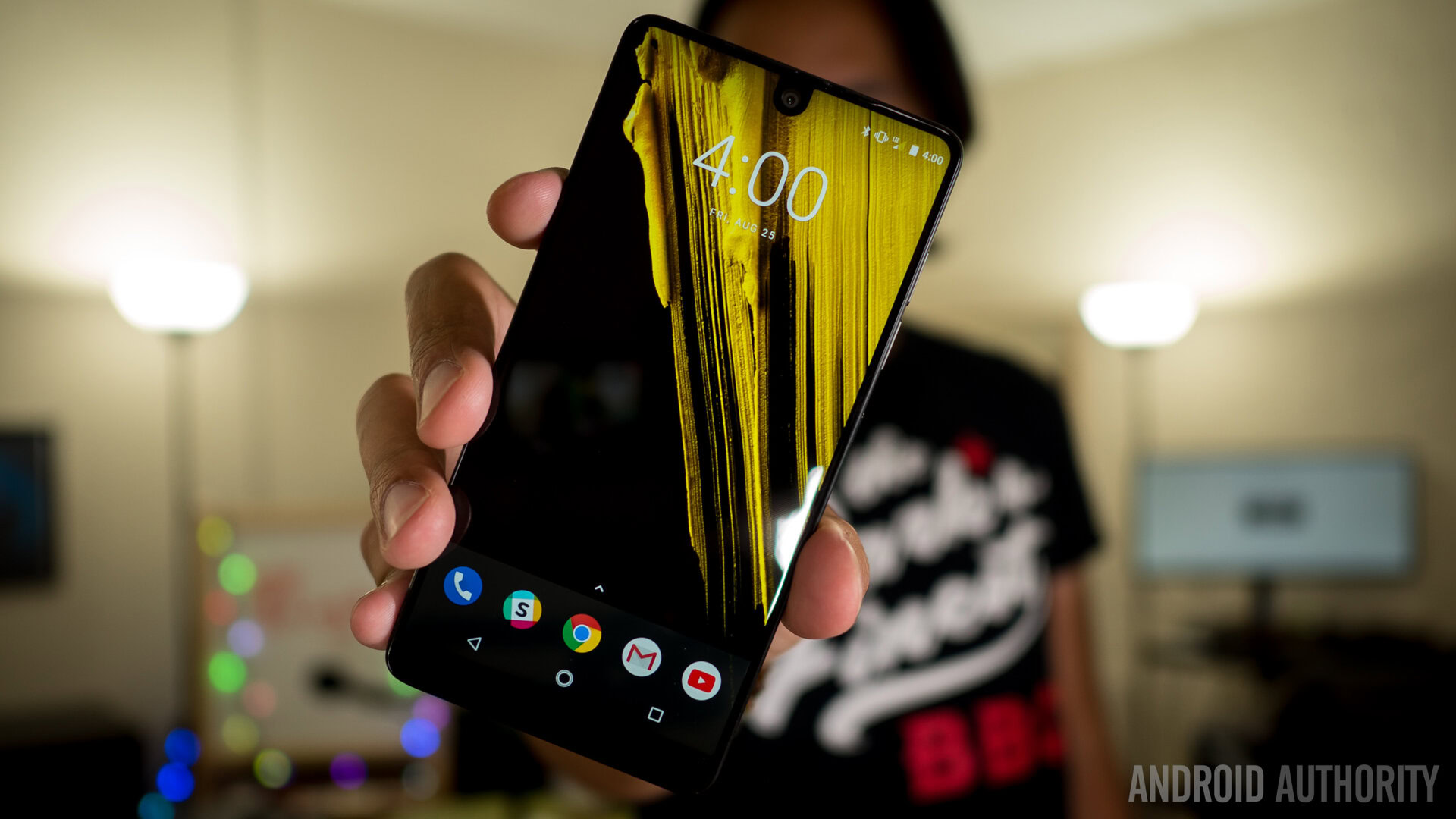
Essential PH-1
What we like
What we don't like
Our scores
Essential PH-1
It’s a question that will inevitably be asked by just about everyone, so we’re here to give our perspective on whether or not the Andy Rubin backed Essential Phone is actually, well, essential. (I’ll try my best to keep the ‘essential’ puns to a minimum.)
Read Next: Why modular phones didn’t live up to the initial hype?
A great build and a really lean software experience bring a lot to any first glance at this phone, but what else does it bring to the table?
We’re taking a closer look in our Essential Phone review.
Design
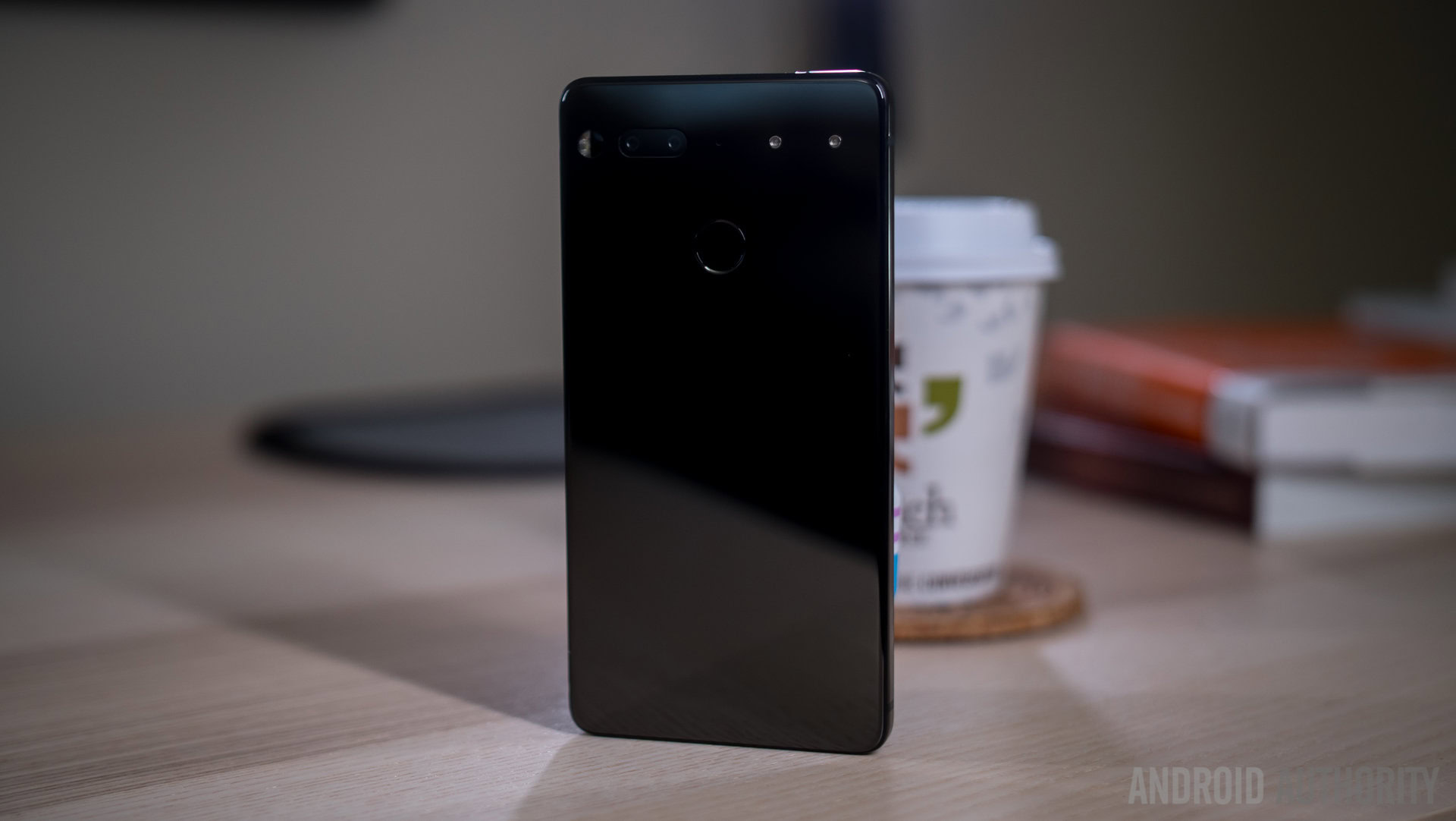
The movement of minimalism – relinquishing all of one’s possessions in favor of a life without a ton of frivolity – is strong with the Essential, as easily seen at first glance and in first hold.
There is no questioning the premium nature of this device
The blocky design of the phone forgoes overture and fancy curves in favor of an easy to hold, accessible build. And with the heft afforded the device thanks to the titanium frame and ceramic shell, there is no questioning the premium nature of this device. Though the highly glossy materials make the phone easily overrun with fingerprints – especially in the dark edition – the sheen and symmetry definitely help keep the phone eye catching without trying too hard.
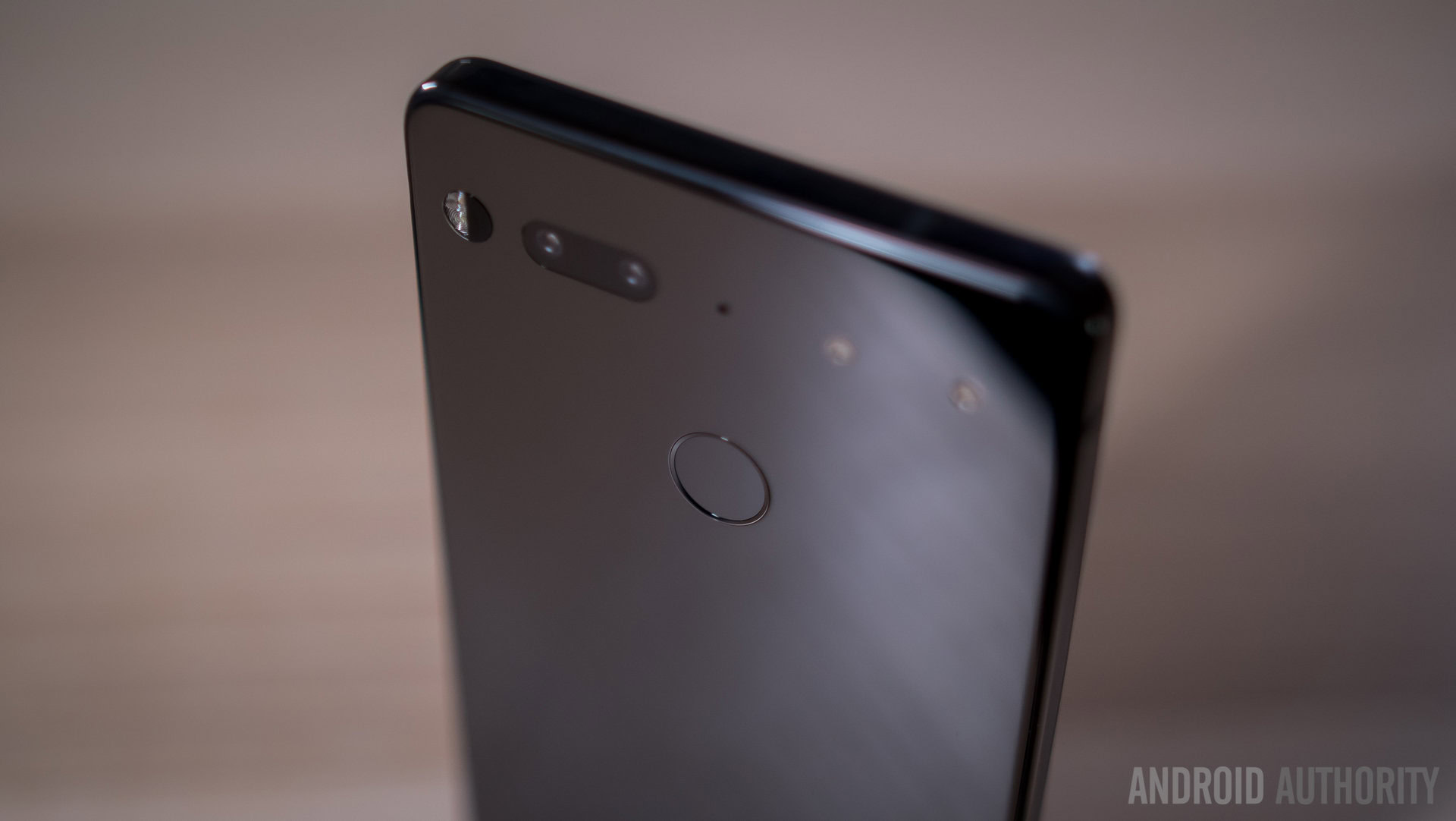
The symmetrical quality comes down to the lack of bits and pieces strewn about the body. A dual camera lens sits directly opposite the modular connector pins, but underneath that it’s just the fingerprint reader and basically nothing else. Essential wanted to make a phone without branding whatsoever, and it has definitely succeeded – this might be one of the cleanest phones we’ve ever seen, design-wise.
Design-wise, this might be one of the cleanest phones we’ve ever seen
Display
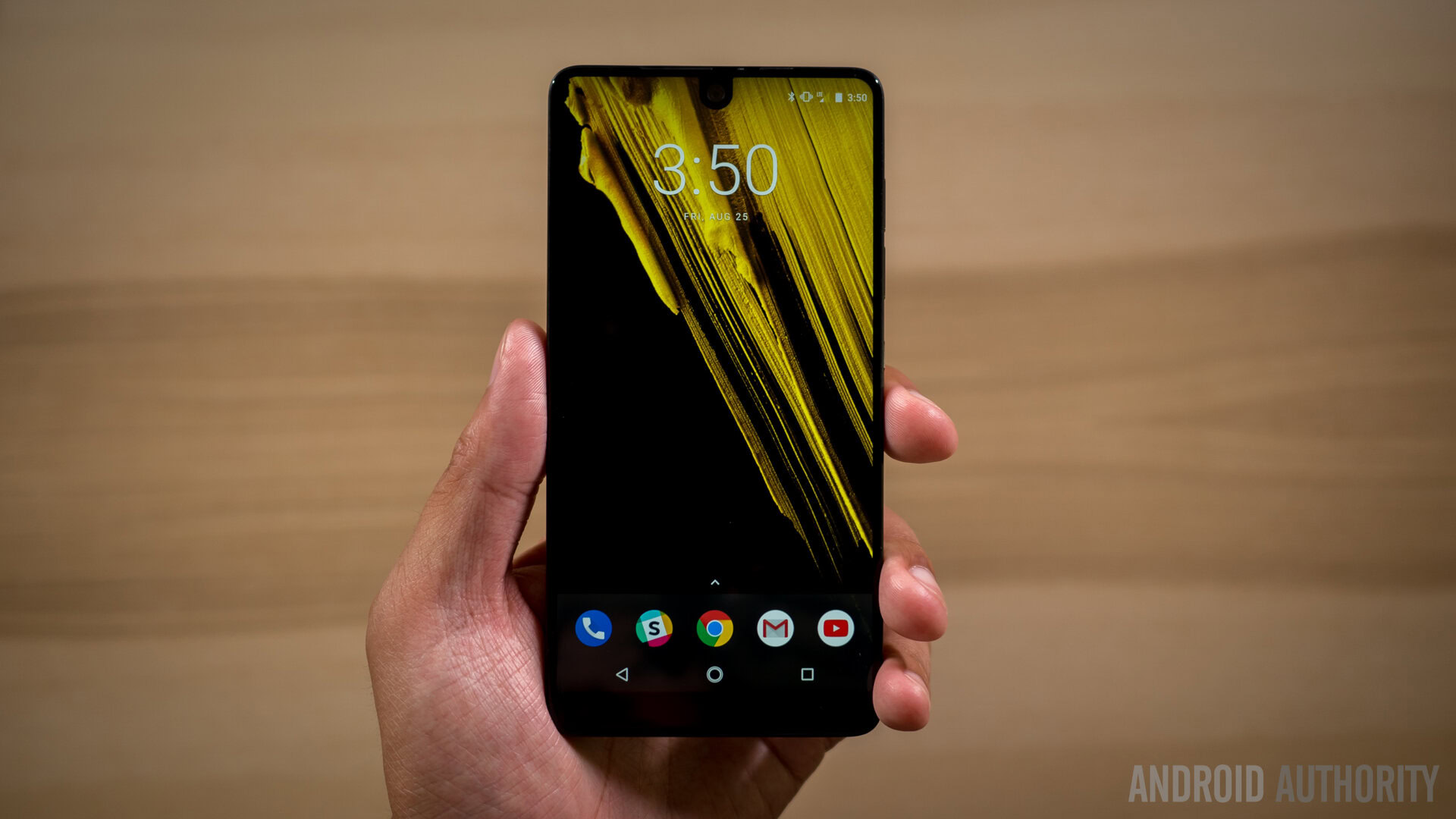
And the biggest reason for that design is because the whole phone was made with the screen in mind – not only did Essential want the screen to be the focal point, they wanted users to feel like they’re basically just holding a display.
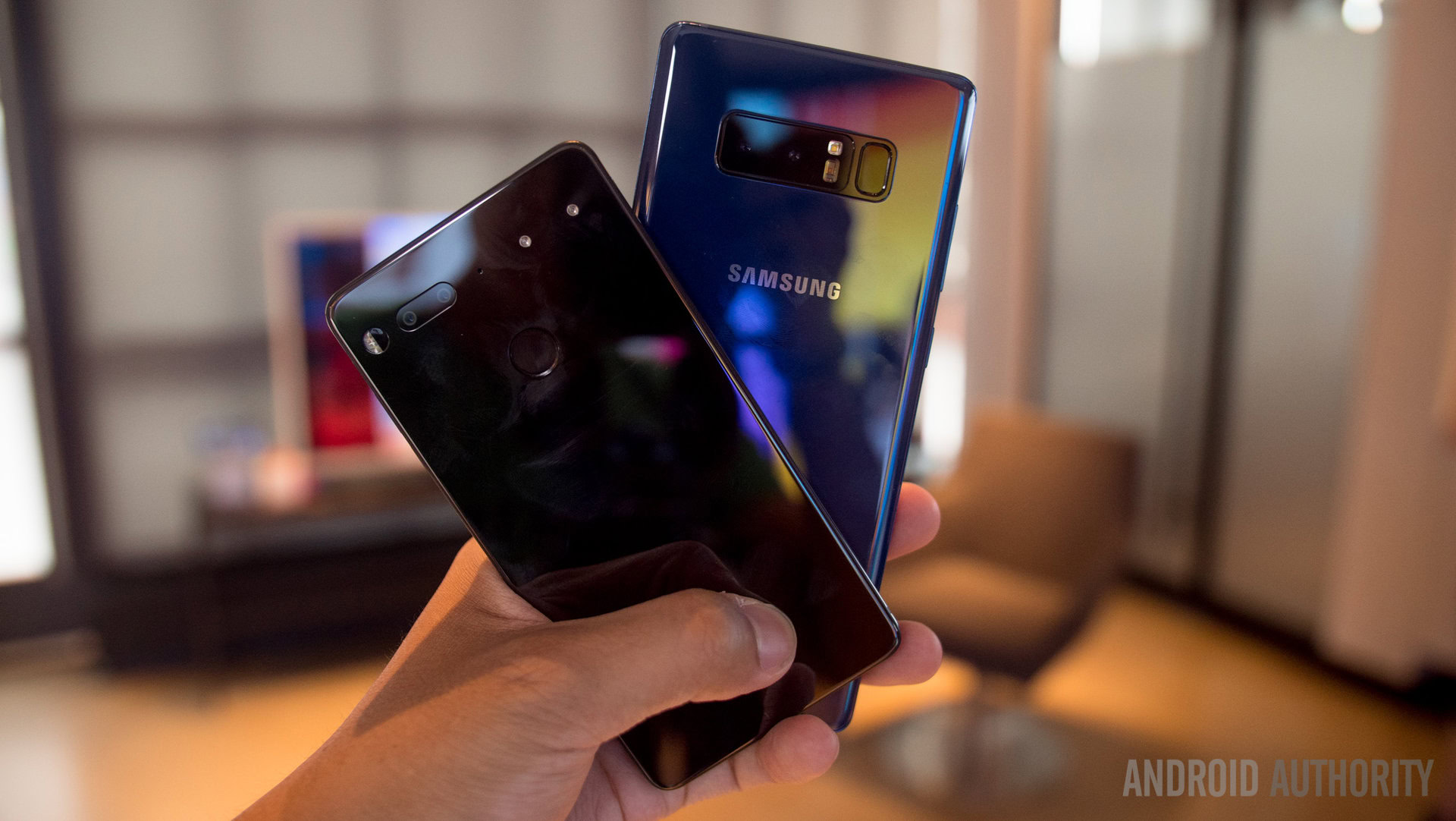
They’ve achieved this with a Quad HD 19:10 aspect ratio screen that sprawls throughout the majority of the front, cut by only a respectable chin and a small dip at the top for the front facing camera. The feeling of having all this screen available is pretty great and hasn’t gotten old yet – it is definitely one of the biggest draws of the Essential.
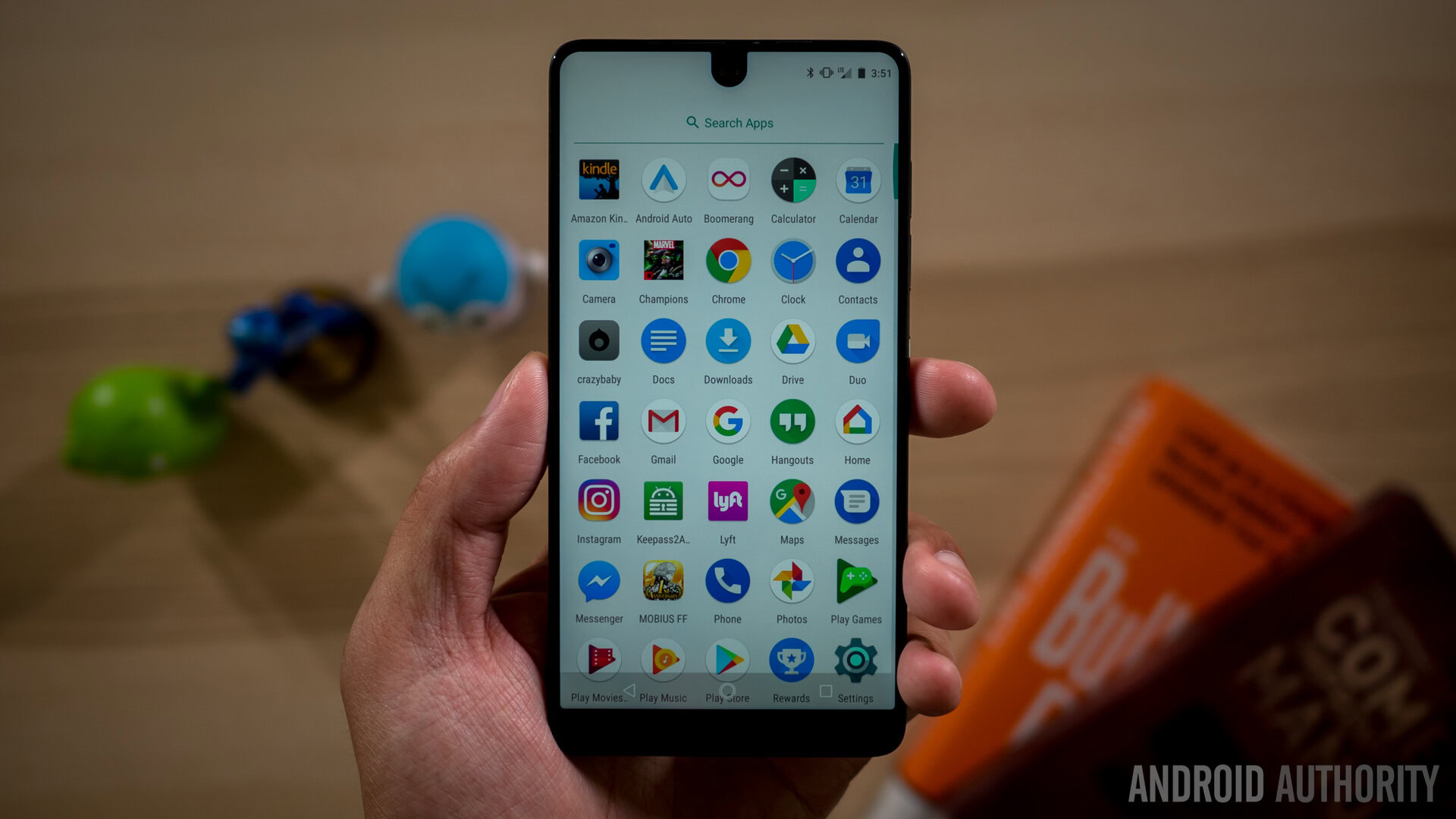
The only real gripe with the display is its IPS LCD nature – AMOLED would have been a great step up, but that’s not to say the IPS doesn’t do the job. In fact, its colors have been dialed in fairly well and the display is pretty visible when cranked up under sunlight.
There are a few quirks to the display
There are a few quirks to the display, however – elements have to reach all the way to the top and sometimes it doesn’t quite blend in. This is most noticeable with the heads-up notifications that have a lot of white space until it reaches below the camera. In other cases, it’s likely just a matter of time before applications update to accommodate – one such example is in Snapchat, where the Text tool is basically impossible to tap on at the top when it’s tucked behind the notification area.
Further reading: AMOLED vs LCD: differences explained
Performance & hardware

The Essential Phone is no slouch under the hood
Overall, using the screen for jumping around the spartan software has been great, thanks to plenty of other essentials that have been kept in mind. The Snapdragon 835 keeps the phone up to date, and it includes 4 GB of RAM. Although there is no microSD card, 128 GB of internal storage is standard across the board. If this phone is trying to redefine what is considered essential to users, I wouldn’t be upset if this detail became the norm.
Every other connection and capability is part of the package here, including a phone speaker that might seem questionable given the screen’s top portion. Unlike the Xiaomi Mi MIX that tried to replace the speaker with bone induction, an actual phone speaker is tucked into a very small slit in the top bezel. And it works well enough for calls, providing good-enough sound and volume.
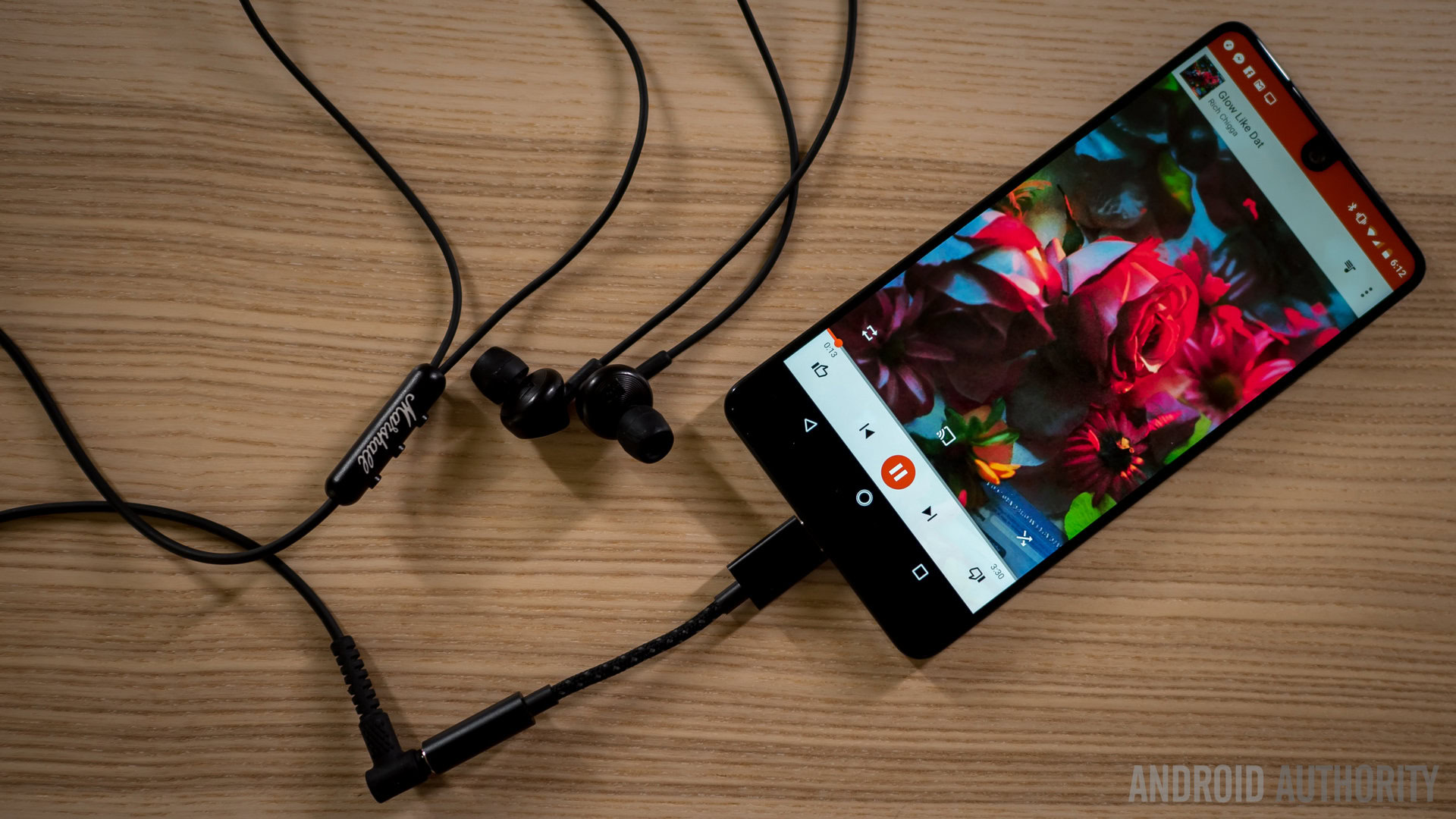
There's one big sacrifice here: no headphone jack
Here’s where things get iffy – look around the minimalistic build and you’ll notice one sacrifice: the headphone jack. I don’t blame anyone for calling out the name “Essential” for this, as the company opts for a USB Type-C adapter in order to plug in your favorite wired headphones or earbuds. My usual advice in this regard is to just keep the adapter connected to the headphones. That said, the USB-C audio experience is above average – this phone can drive headphones pretty well, leading to some of the fuller and louder listening experiences I’ve had recently. It doesn’t beat a third-party DAC or a dialed-up AMP, but it gets about halfway there and that’s saying something.
Unfortunately, this positivity can’t be applied to the speaker. It gets really loud but is almost piercing at its highest levels. I would be happier with a lower volume unit that provided a richer sound.
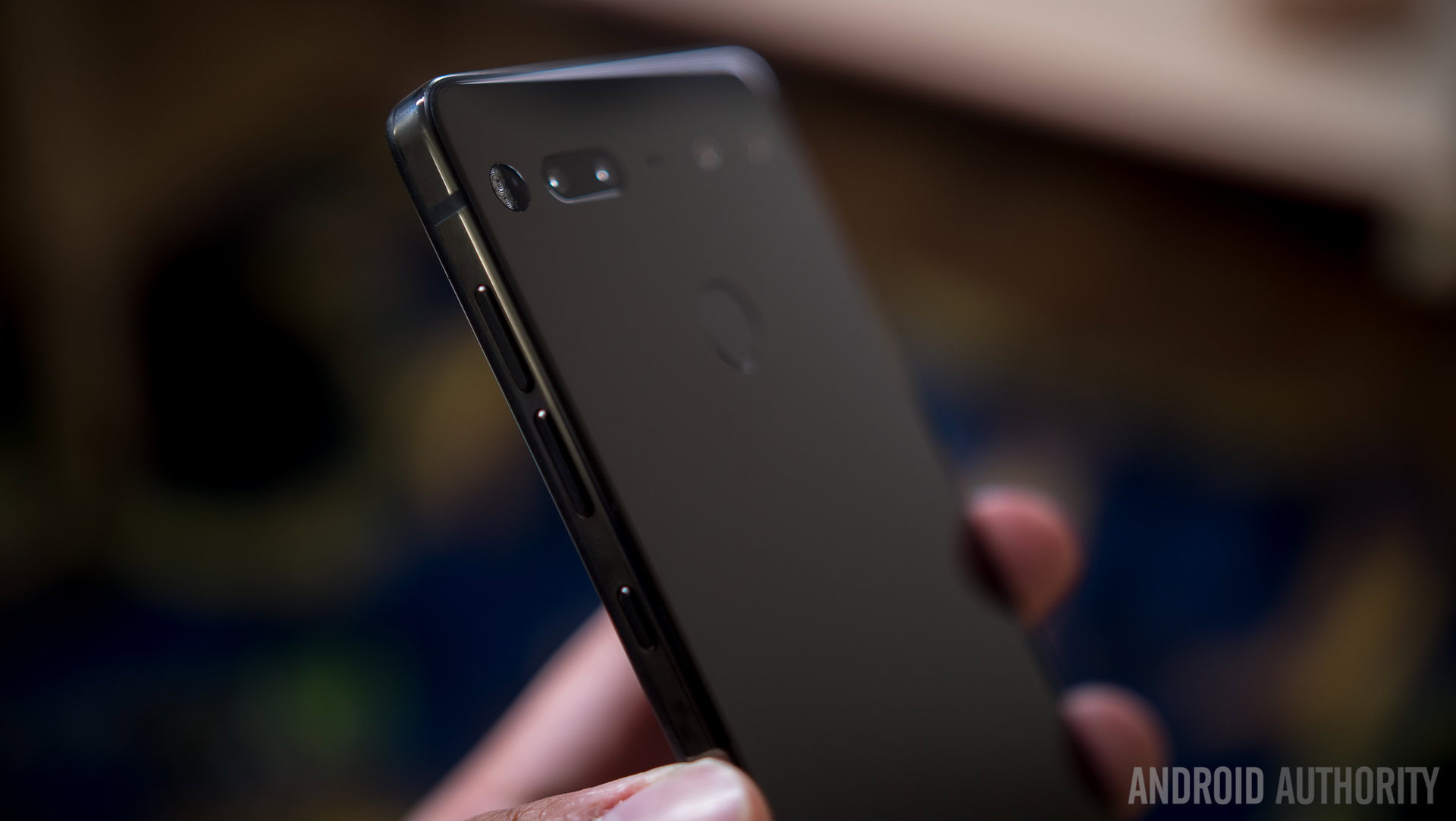
The battery is a 3,040 mAh unit, which seems fairly standard for a phone of this size these days. Though my tests are mostly based on quite heavy usage (i.e. using the camera for vlogging), I was able to still get three and a half hours of screen-on time during those days, which puts the phone at a pretty solid average. With some frugality, I don’t see why anyone wouldn’t be able to get another hour of screen-on time out of the Essential. And charging the phone is easy and kind of cool with a high-quality braided cable and high wattage output from the included charger.
The connector pins are, so far, an unrealized part of the Essential package, as the 360 camera is not quite here yet. However, Essential promises that the pins are going to be backwards compatible and included in their products moving forward. We’ll bring a review of the 360 camera once we get our hands on it.
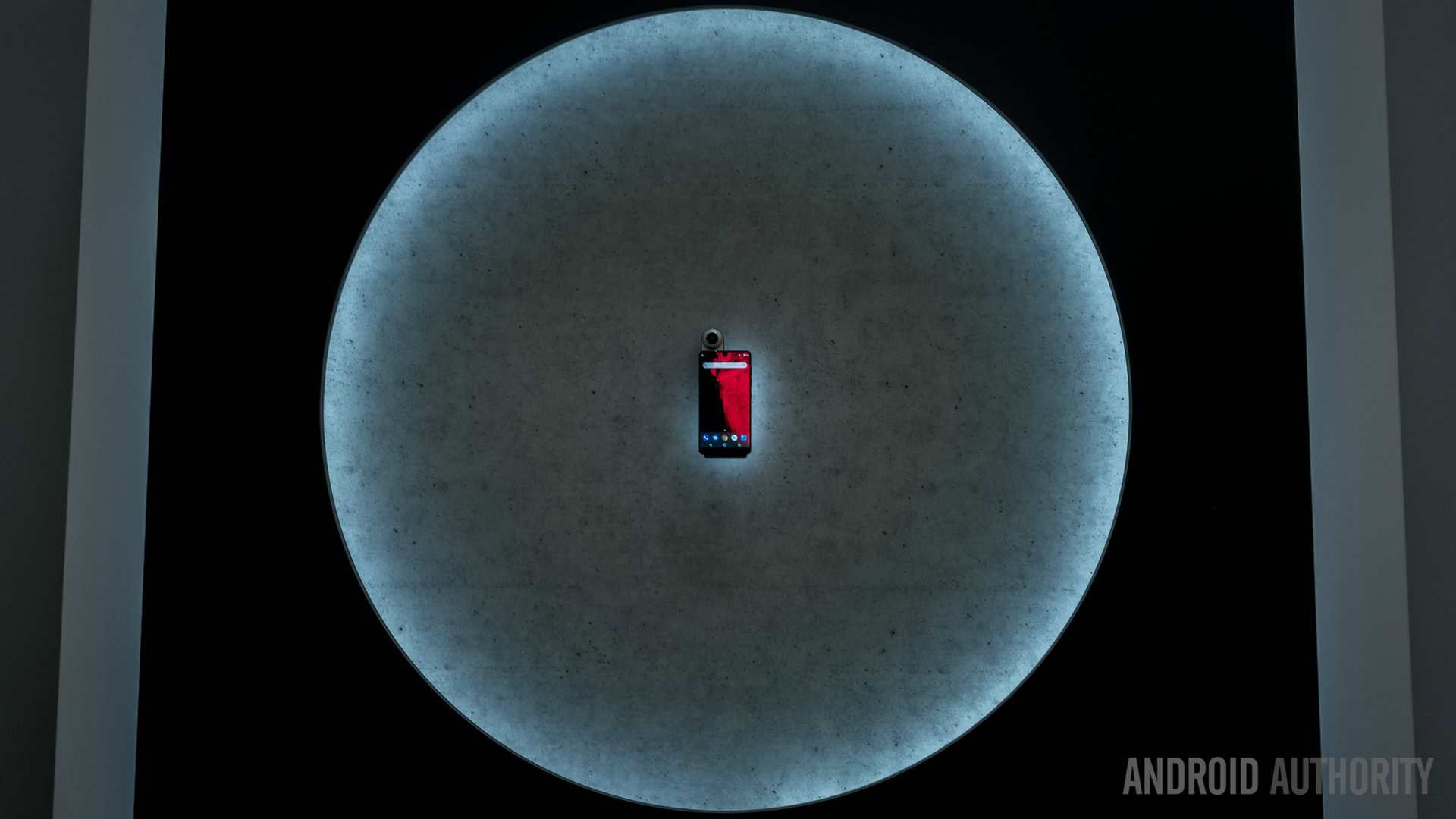
Camera
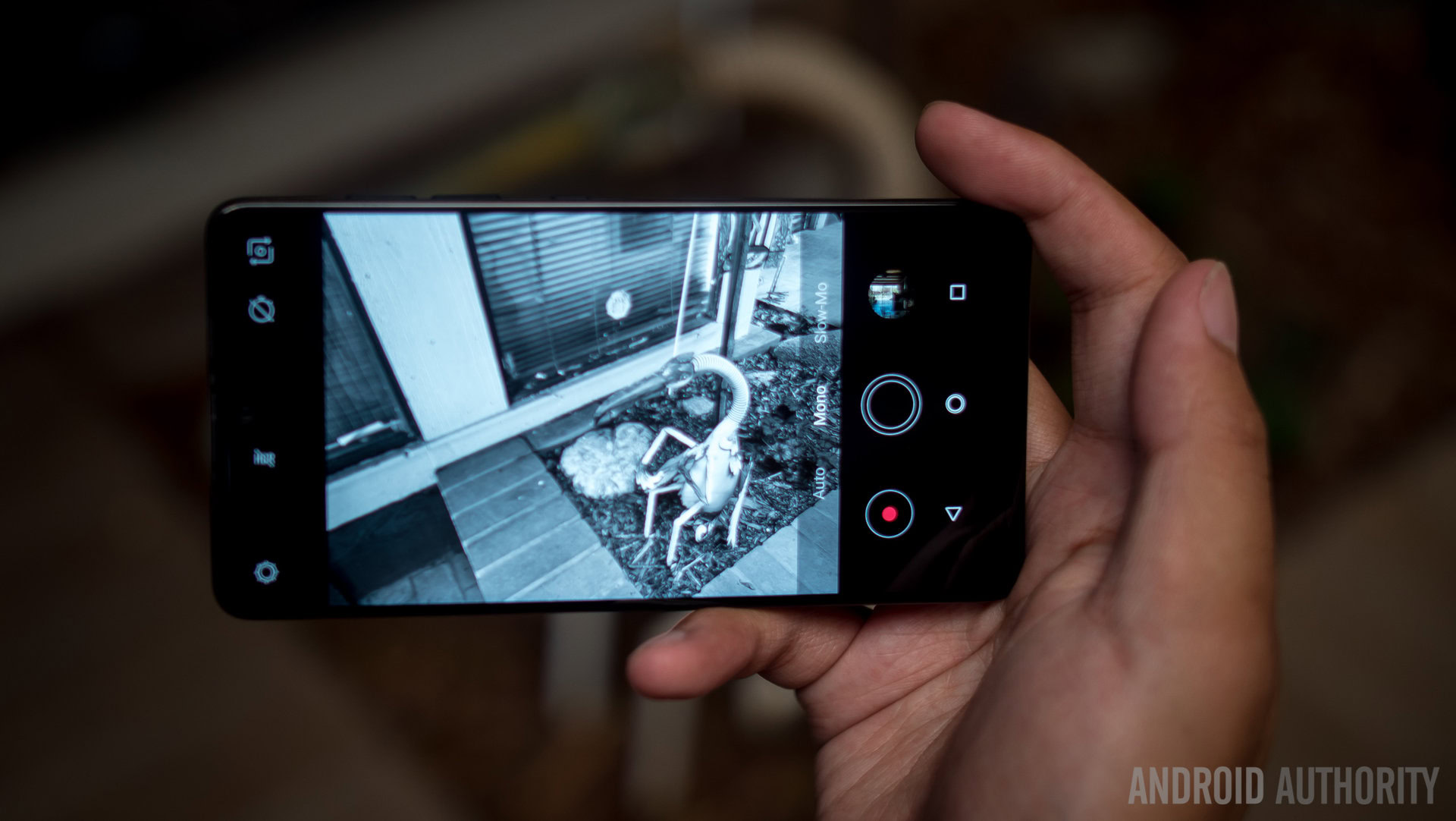
Speaking of cameras, Essential made sure to be part of the pack when it comes to dual lens setups. For their first smartphone, a combination of RGB and monochrome sensors are utilized to bring what should be highly detailed photos. Meanwhile, the front-facing camera is an 8 MP shooter that is actually capable of 4K video recording. And all of this is supported by a camera app that is decidedly barebones and has been updated three times since we got our hands on our review unit. Those updates added an HDR mode – which was a bit odd – and a bit more speed when taking pictures.
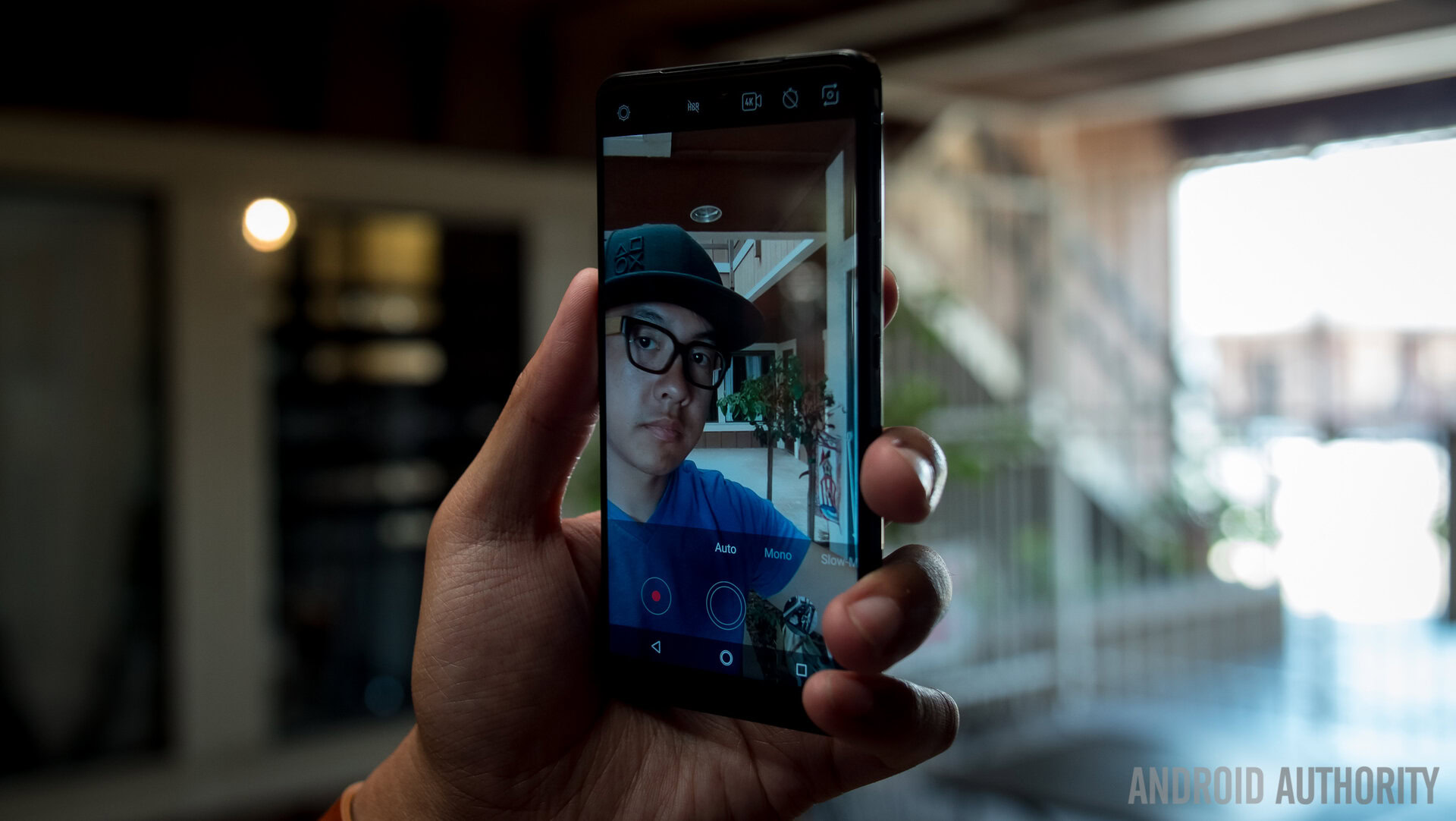
Shooting with the Essential has gotten better in terms of shutter to file speed, but changing between the different lenses can still be slightly delayed and getting the right focus can take a bit.
Furthermore, the updates still don’t address the issue that the camera app doesn’t have too much to offer other than the basics. Aside from a slow-motion mode, there is little else by way of extra shooting modes or even a manual mode. This isn’t a bad thing when the camera is a good automatic shooter, but unfortunately, the results have been less than stellar.
Photos from the Essential seem to lack a lot of proper processing, as pictures are rather flat and pale in comparison to other shooters like the Google Pixel. Dynamic range is lacking even when HDR is turned on, and it’s not even HDR Auto – even then, pressing HDR for some reason turns the flash back on auto. While pictures are certainly decent in really bright conditions, quality tapers off pretty quickly as the light dims. Colors don’t really get a big punch in or out of HDR, which is evident in the pictures compared to the Pixel.
Photos from the Essential seem to lack a lot of proper processing and dynamic range
If you’d like to go in-depth with the Essential Phone’s camera, be sure to watch the review video attached at the top of this article.
I even used the Essential as my vlogging camera for a couple days while in New York City, but it didn’t take long for me to see that the videos are also flat and lacking in contrast because of poor dynamic range.
Essential Phone camera samples
While plenty of phones have already adopted the dual-camera setup, Essential has done well to start out as part of the pack. Unfortunately, it still has to play catch up fixing a classic problem – camera software processing. While there are certainly going to be many more updates coming from Essential, as promised, OTAs have hardly ever been a difference maker, if history is any indication. Nonetheless, we will be here to report any major changes, should they come for this decidedly average camera.
Software
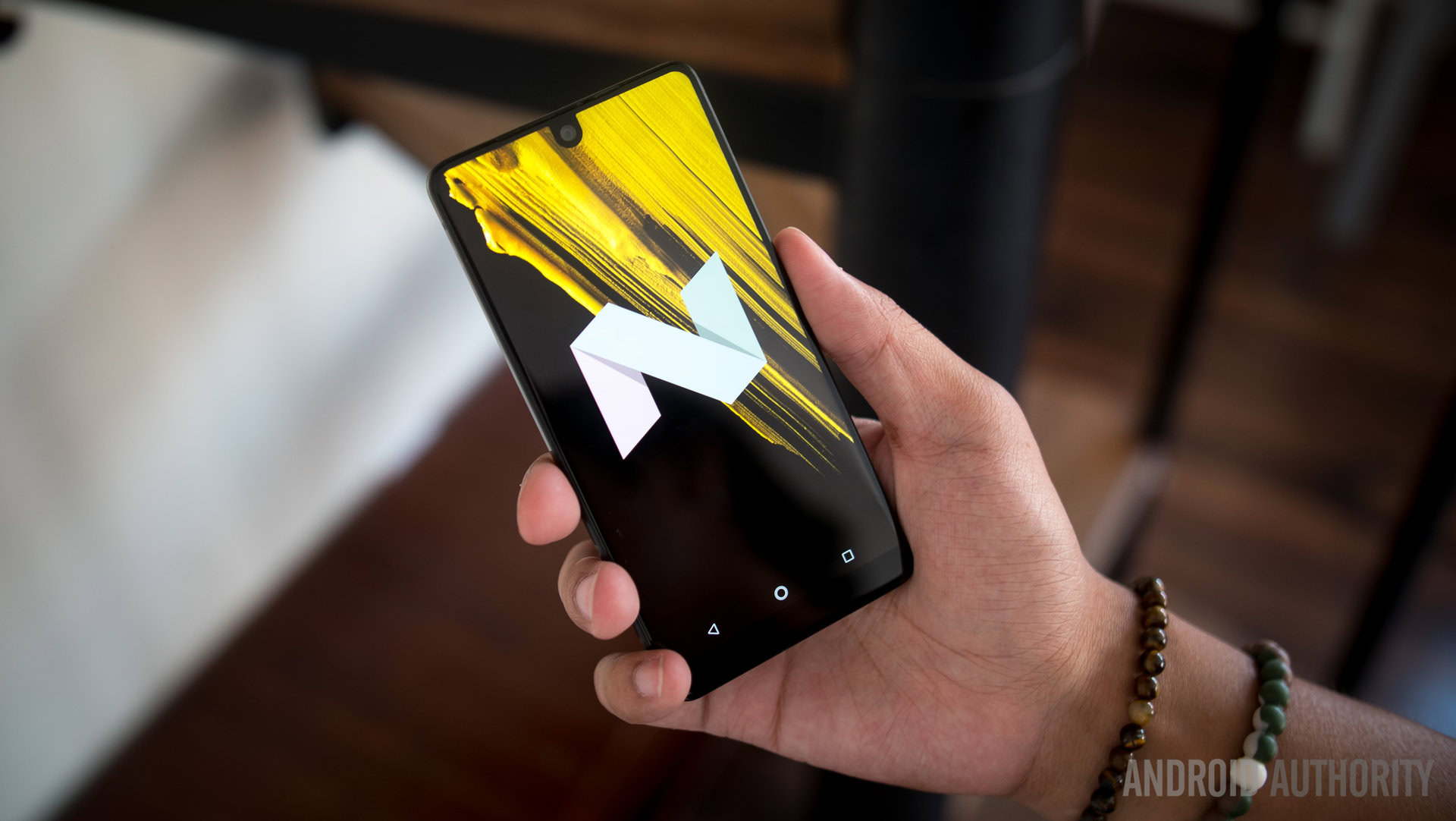
There are no extras here, just Android’s birthday suit
The promise of software updates is one of the main draws of the Essential, though. As the father of Android is at the helm of this phone, it should be no surprise to anyone that the Essential trims its software down to the very bare, well, essentials of Android 7.1.1 Nougat. There are no extras here, just Android’s birthday suit. Anyone that has opted for a Pixel because of the overwhelming amounts of features baked into other user interfaces will feel the joy of simplicity here. Whereas there might be some extra methods of input, a couple of added gestures, or even a night mode in other phones, all such attempts are omitted in the Essential.
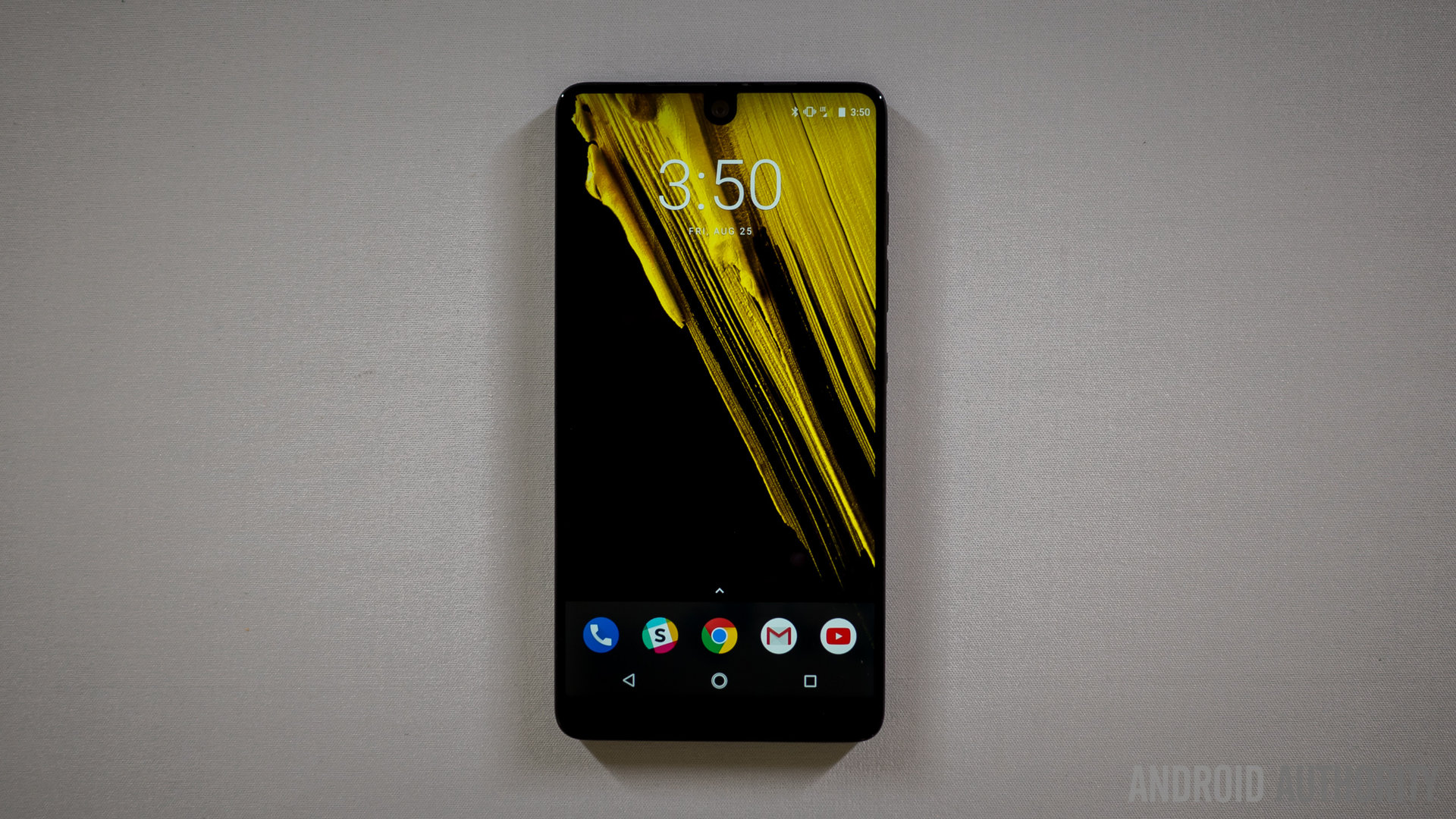
I can see where that might irk users who are not diehard Android purists – after all, a lot of the features that might go otherwise unused in Samsung or Motorola phones were conceived for pretty good reasons. And when those features actually work, the convenience and usability quotient goes up for those respective devices. This just isn’t the case for the Essential – instead, you’re given carte blanche to download third party apps to fill those potential gaps.
Read Next: 6 great cases for your Essential PH-1 phone
Specs
| Essential Phone | |
|---|---|
Display | 5.71-inch LTPS LCD 2560 x 1312 resolution 503 ppi 19:10 aspect ratio |
Processor | Octa-core (2.45 GHz Quad + 1.9 GHz Quad) 64-bit Qualcomm Snapdragon 835, 10 nm processor |
RAM | 4 GB |
Storage | 128 GB No MicroSD expansion |
Cameras | Rear cameras - Dual 13 MP sensors (RGB + Mono), ƒ/1.85 aperture, Hybrid Auto Focus combing Contrast, Phase Detect and IR Laser Assist Focus Front camera - 8 MP sensor with ƒ/2.2 aperture |
Battery | 3,040 mAh Non-removable Fast charging on wired No wireless charging |
Water resistance | Dust and water resistant |
Software | Android 7.1.1 Nougat |
Dimensions and weight | 141.5 x 71.1 x 7.8 mm 185 g |
Gallery
Pricing & final thoughts
And that’s kind of where the Essential really finds itself in a weird place – for $699, it seems like you’re paying for beautifully crafted hardware, with very little value in the software, aside from the fact that it’s there. Again, this is a polarizing thought because Android purists will view what is lacking as value in and of itself, but that’s just another reason why the Essential Phone is so interestingly frustrating.
Vanilla isn’t a bad flavor, but there’s a reason why it’s tucked in the corner of the ice cream cooler
The Essential is locked in a tug of war between its software and hardware, both polar opposites of each other. Every bit of the hardware – the pleasing screen, the high-quality build, great specs, and the dual camera – effectively reels you in. However, what is supposed to drive it all – the software – fails to truly take advantage of that excitement. You’re given freedom to customize the Essential with third-party apps and, in the future, the phone’s promise of modularity. But without that effort put in, what initially seems delectable, eventually reveals itself as decidedly vanilla.
Vanilla isn’t a bad flavor, but there’s a reason why it’s tucked in the corner of the ice cream cooler.